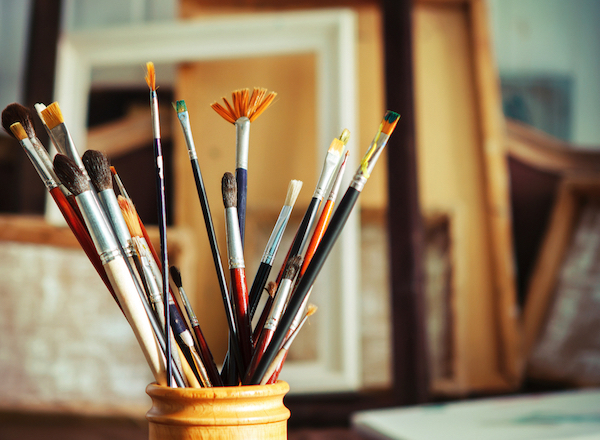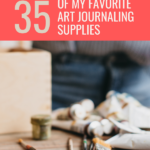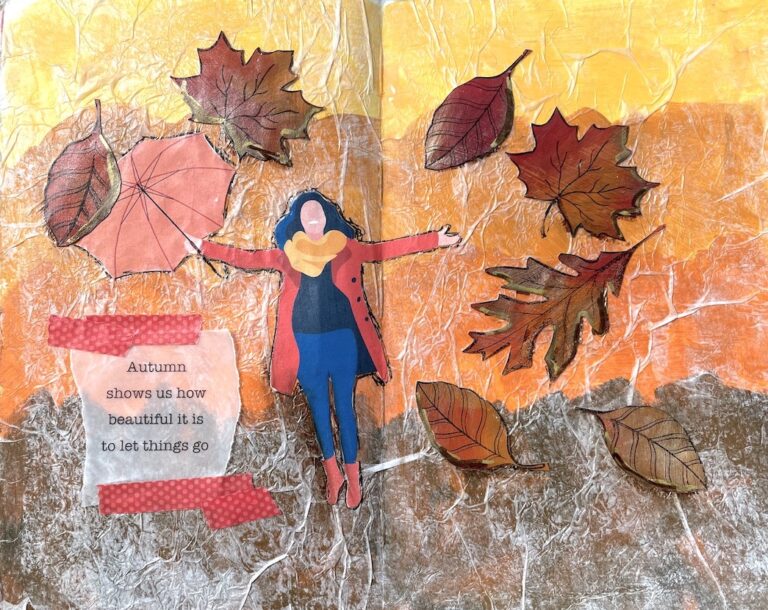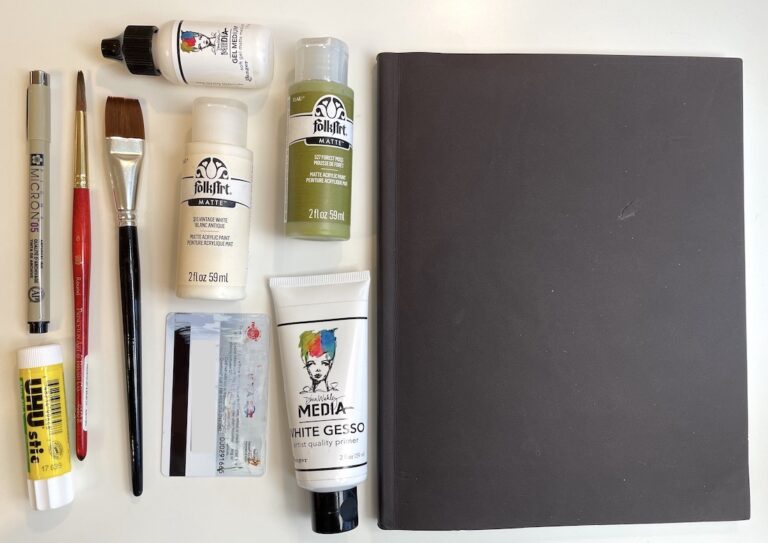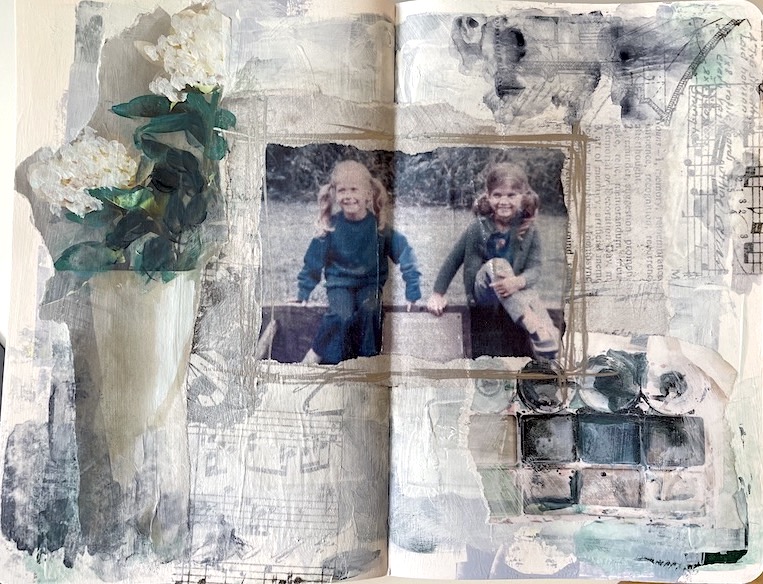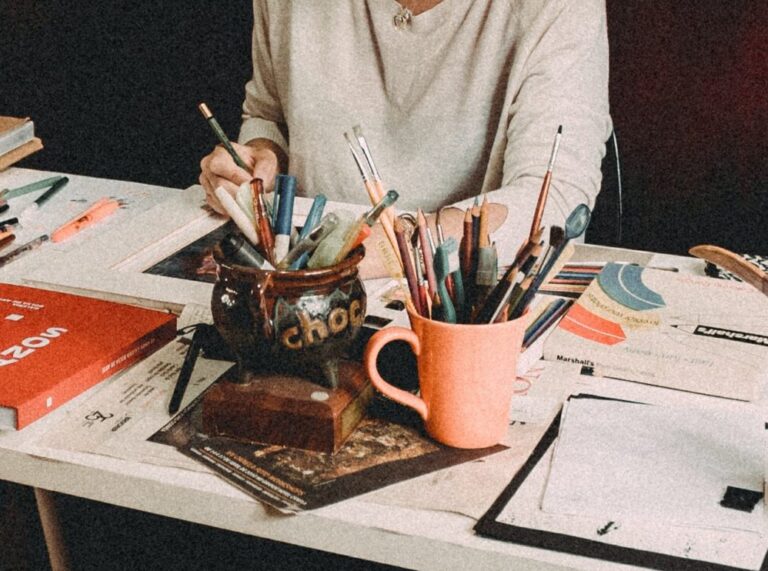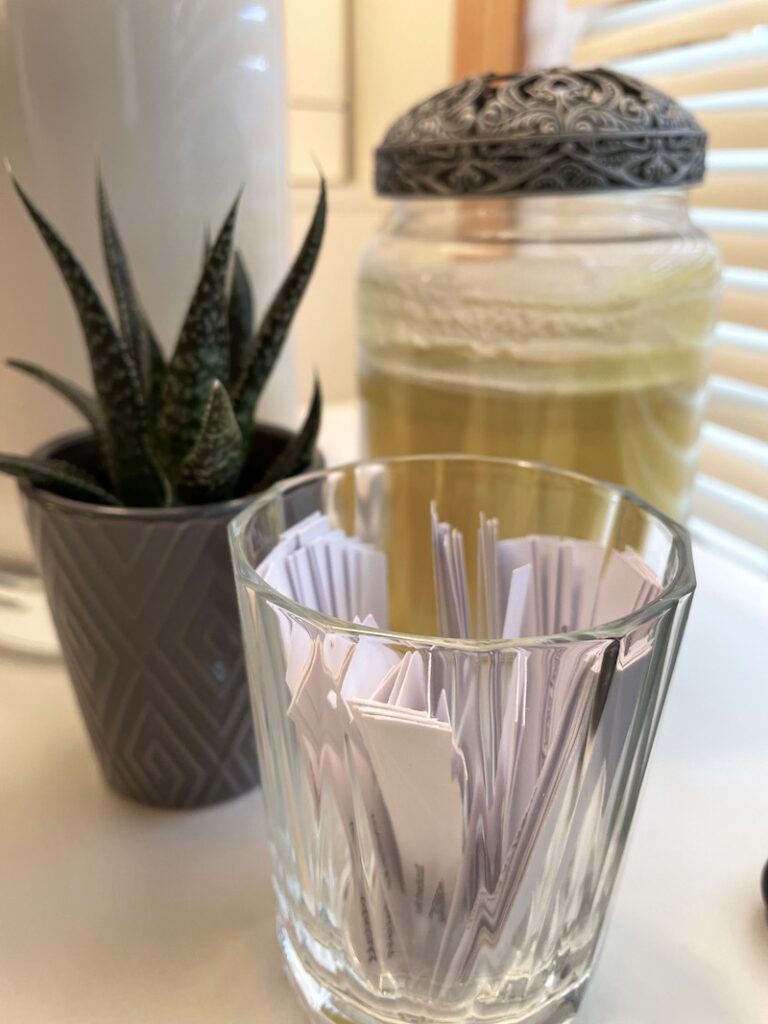35 of My Favorite Art Journal Supplies
If you’ve been art journaling for a bit and looking to expand your art journal supplies, I’ve tested a lot of products and have narrowed down a “few” of my faves. Keep in mind, there are many great brands and alternatives to what I have listed here. These are just the products I love to recommend for those getting started in art journaling.
I’ve listed these below with links where I could, but please know these are almost always found cheaper in your local store where you don’t have to cover shipping costs (because let’s face it, even if it says free shipping, it’s buried in that online price).
Let me know if you have favorites that aren’t listed here!
The right book.
This is important, but not so important that it should keep you from creating your journal. There are hundreds of books to choose from and this, like most of your supplies, will be personal preference. I have several books I use, but my go-to books are the Strathmore 500 series 7.75” x 9.75” softcover mixed media journal or the Stillman & Birn Zeta Series Softcover Sketchbook. Either are middle of the road and work for just about anything I need it to (except super heavy watercolor).
However, the book you choose depends on what mediums you use (acrylic, watercolor, pencil, or ink). Basically, the more water you use, the thicker the paper should be. The texture and color of the paper is also a personal preference. I personally like smoother paper, but some people like more “tooth” on their page.
Obviously, any book will technically work, but I recommend going to the store and feeling the pages in person. Do you like the feel? The thickness? The color? The binding? Do you want it to lay flat? For instance, I personally don’t care for spiral bound; I find the spiral gets in the way because sometimes I work on both sides of the paper. However, some actually prefer it because the book can fold all the way around.
Here is a quick summary that might help you pick out the right book.
- If you like just using a pen and pencil, try an art journal with thinner pages or a basic sketchbook. I actually recommend getting a small one so you can carry it wherever you go and get used to sketching out items you see wherever you go, like the coffee shop. This will help you build up a daily routine and begin to look at objects differently.
- If you like the bold colors of acrylic paints, go with mixed media paper of at least 200 gsm. This will hold up fine to acrylics. From there, determine the size, binding, and style that works best for you.
- If you like using heavier water, like watering down your acrylics or watercolor, go with a thicker stock of at least 270 gsm. You could also consider simply using watercolor paper and storing your “journal pages” in a box. It really just depends on your preference. If you think you might want to try watercolor just here and there, just get a mixed media journal and go easy on the water. It will hold up fine. That’s a good middle-of-the-road option that will offer flexibility for you to experiment with different mediums without spending more on a watercolor journal.
- Try repurposing an old book. Often, the covers and old pages work beautifully and can be the book can be an inspiration itself. If you go this route, you may want to consider picking up a bottle of white gesso. This can help make the existing words on the pages more subtle. I personally like using gesso on all my pages regardless of the type of book (except when using watercolors), but that’s my preference.
Pencil
A good pencil and eraser are always nice to have. These can vary widely, but I recommend a soft Blackwing (either the Pearl or Matte) or a simple artist’s pencil set and a kneaded eraser.
Pens
- Black Staedtler pigment liner 0.5 – I like this as an alternative to the micron. It’s a little more expensive but writes a smoother and feels better in my hand.
- Platinum carbon black ink fountain pen and replacement cartridges – this is a basic fountain pen that makes really pretty (thin) waterproof marks on the page. For something different than the micron. Warning: It makes a great line, but this pen can get super messy if you’re not careful.
- White Uniball Signo – these are great for tiny white accents an alternative to the Posca when you need something thinner.
- Posca pens – great for writing on just about anything. Posca offers a variety of widths and colors, it’s hard to not get carried away. I prefer the medium black and white (but also love the yellow).
Gesso
If you’re using acrylic paint, the paint just goes down so much nicer over a smooth coat of gesso, especially if you’re using smooth mixed media paper. I prefer Liquitex professional gesso in white. This can get a little expensive, but typically more bang for your buck in the larger bottles. Liquitex also carries a slightly less expensive “basic” version.
Paints
- Acrylics – while any acrylics will do, I really like Dina Wakley’s acrylic paints. This line has some great colors. For a slightly thicker paint, the Liquitex Basics acrylic paints or the Grumbacher Academy Acrylic paints (which can almost always be found at Walmart or Hobby Lobby) make a great, inexpensive alternative. In an art journal, I just don’t think you need paints from a professional line so these work just fine.
- Watercolors – my favorite for a long time has been Daniel Smith for its mineral reflections and the patterns they make. But I also really like Golden’s QOR line.
Alternatives to Paint
- Faber-Castell gelatos. These can be used as a watercolor or scrub right on top of acrylic for accents or shading. A great line of colors and so versatile. If you have little ones, be careful not to leave these around… they look like little lipsticks or chapsticks! Things could get ugly.
- Caran d’Ache Neocolor II (water-soluble pastels) but also available in Neocolor I (water resistant wax pastels) and I love the metallics.
- The oh so versatile Stabilo All Pencil in black. This is probably one of my most favorite supplies that I go back to time and time again. If you buy it online, it is so expensive to buy just one. You will more than likely fall in love with this pencil, so I recommend buying the multi-pack or the sample pack. But if you find it in your local store, it’s typically only a couple of dollars.
Adhesives
- Washi tape. You can find this everywhere, but please know there are very cheap versions of washi that might not stick very well over time. Worse case just hit it with some matte medium and carry on.
- Uhu glue stick. This works better than a standard glue stick and it is acid-free if that’s important to you.
- Books by hand PH neutral PVA archival adhesive. This works so well and a little goes a long way. This works great for larger pieces of paper when you can’t use matte medium or a glue stick. This is typically used by bookbinders for laying down smooth.
- Matte medium. I prefer Liquitex matte medium for the price and quality, but Golden carries a great product, it’s just typically more expensive. For adhering thicker paper, you may want to use a matte gel instead.
Other Tools
- Paintbrushes
- There are so many great paintbrushes. And the requirements differ dramatically depending on your use. For art journaling, I don’t use super fancy brushes since I tend to abuse them. I love my little Simply Simmons #8 round brush, my Princeton Elite #6 round, and my cheap little Zen Royal & Langnickel ¾” flat brush. They’re so versatile and have served me well over the years.
- Makeup brushes – if you like stencils, try using these foundation brushes to apply a thin layer of paint over the stencil. It’s so smooth, it looks like airbrush. I saw a set like this in the craft section for $40, but this whole set (billed as makeup brushes) is less than 10 bucks.
- Tiny attacher by Tim Holtz for stapling things when a standard staple just won’t do.
- Natural pumice stone is a must for getting dried acrylic paint off your hands.
- Silicone spatula thing by Princeton. This is great for spreading paint when you don’t want to use a credit card. This is a smaller width than a credit card, so it gives you a little but more control. Plus, it’s just fun to use.
- Stencils. Lots of stencils. They’re inexpensive and you can use them over and over again. Scrapbook.com has a great variety and they ship super-fast.
- Household items – keep tissue paper leftover from gifts, magazines and holiday cards, scraps of bubble wrap (for fun stamping) and even brown bags. If I like the look or feel of it, I cut out the cute parts and toss it in my ephemera box.
OK so that’s a long list, but those are my favorites (today). I’m sure I’m forgetting something but that’s for another post, another day. Let me know if you have some favorites that you can’t live without.
If you’d like to see how I use some of these tools or want some more inspiration, check out my latest class here.

